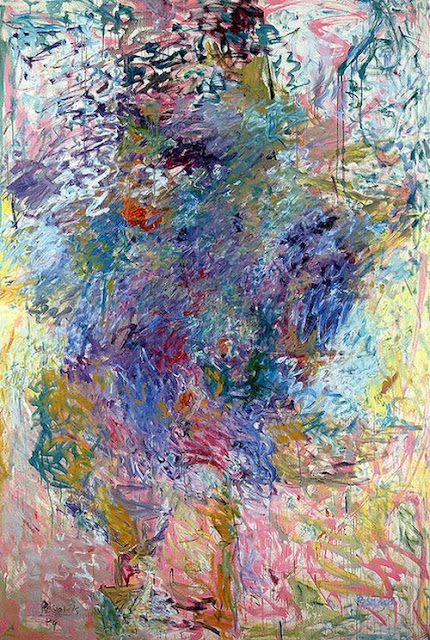Milton Resnick (1917-2004) was an American artist noted for abstract paintings that coupled scale with density of incident. It was not uncommon for some of the largest paintings to weigh in excess three hundred pounds, almost all of it pigment.He had a long and varied career, lasting about sixty-five years. He produced at least eight hundred canvases and eight thousand works on paper and board.
He also wrote poetry on a nearly daily basis for the last thirty years of his life. He was an inveterate reader, riveting speaker and gifted teller of tales, capable of conversing with college audiences in sessions that might last three hours.
During his lifetime he was represented by the following galleries: Poindexter Gallery, Howard Wise Gallery, Max Hutchinson, and Robert Miller.
He also wrote poetry on a nearly daily basis for the last thirty years of his life. He was an inveterate reader, riveting speaker and gifted teller of tales, capable of conversing with college audiences in sessions that might last three hours.
During his lifetime he was represented by the following galleries: Poindexter Gallery, Howard Wise Gallery, Max Hutchinson, and Robert Miller.
Paintings held in public collections include: New Bride, 1963 Smithsonian American Art Museum, Washington, D.C., Mound, 1961 National Gallery of Art, Washington, D.C., Saturn, 1976 National Gallery of Canada, Ottawa, Ontario], Elephant, 1977 Milton Resnick and Pat Passlof Foundation, New York, Earth, 1976 Museum of Modern Art, NYC, Wedding, 1962 The Metropolitan Museum of Art, New York, Pink Fire, 1971 National Gallery of Australia, Canberra, and Untitled, 1982 Whitney Museum of American Art, New York, along with many pictures of comparable quality in smaller collections — public and private — make for some, an effective case for Resnick as an exponent of the sublime.
His remaining estate is held in trust by the Milton Resnick and Pat Passlof Foundation. Beginning in 2017, the centenary of his birth, the Foundation plans to open his former residence and studio, at 87 Eldridge Street in Manhattan as a public exhibition space to showcase his work, that of his wife Pat Passlof, and other Abstract Expressionist painters.Milton Resnick’s estate is represented by Cheim & Read, New York.
With the rise of Pop Art and optical painting, not to mention Neo-Dada and Conceptualism, Resnick withdrew somewhat from the art world. Increasingly tending his own garden, he turned inward and began to produce—in complete disregard and perhaps defiance—the dense and rigorous all-over abstractions that would make his reputation. An indefatigable worker, these paintings often took months to accomplish before they were realized to his satisfaction.
With the rise of Pop Art and optical painting, not to mention Neo-Dada and Conceptualism, Resnick withdrew somewhat from the art world. Increasingly tending his own garden, he turned inward and began to produce—in complete disregard and perhaps defiance—the dense and rigorous all-over abstractions that would make his reputation. An indefatigable worker, these paintings often took months to accomplish before they were realized to his satisfaction.
In 1971 he was awarded a large scale exhibition featuring paintings from 1958 to 1970 at the Fort Worth Art Center Museum in Texas. It traveled to the Milwaukee Art Center later that year. In 1985 the Contemporary Arts Museum Houston mounted a retrospective exhibition. He also taught during these years, serving in a visiting capacity at several universities, but never joined any faculty.
In 1976 he bought a synagogue on the lower East Side of Manhattan—an earlier one being turned over to his wife—and lived and worked in it until his death in 2004.Wikipedia
In 1976 he bought a synagogue on the lower East Side of Manhattan—an earlier one being turned over to his wife—and lived and worked in it until his death in 2004.Wikipedia










No comments:
Post a Comment